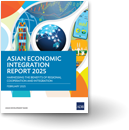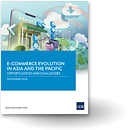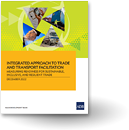Will Kaesong shutdown mark the end of a unique SEZ experiment?
The decision of the Republic of Korea to shut down the Kaesong Industrial Complex on 10 February in the wake of North Korea’s nuclear test and subsequent long-range missile test rattled the Republic of Korea’s stock market. The market, which seemed to have become fairly immune to recurring security threats from the North, now looks to have been unnerved by the abrupt shutdown of the complex.
Given the political symbolism and economic gains for both North and South, this might have considerable ramifications on the security and diplomatic landscape in Northeast Asia. After all, the complex is a unique case of a special economic zone (SEZ) intended to contribute to North Korea experimenting with preferential tax treatment, paid work and combination of labor and capital across the demilitarized zone, building on each side’s comparative advantages.
So why did such a closed nation as North Korea embrace the concept of SEZs to begin with? What has driven the explosion in the number of SEZs from about 500 twenty years ago to over 4,300 today?
Some economists might be bewildered given the distortionary nature of the incentive scheme, price mechanism and preferential treatment of foreign investments versus local, all of which are embedded in the zone modality. Furthermore, it can also create unnecessary social costs such as the need for resettlement, risks to environmental protection, and sometimes labor disputes.
Then, why are zones set up? Simply put, it is because gains from SEZs far outweigh associated economic and social costs. Export revenues can be far greater than shortfalls in tax revenues from tariff exemptions. Corporate tax reductions or exemptions can generate much greater employment, in addition to spillovers from foreign technology, and SEZs boost the growth of local economy through backward and forward linkages between firms inside and outside the zones.
At the country level in Asia, on average a 10% increase in the number of SEZs increases manufacturing exports by 1.1%, according to ADB’s latest Asian Economic Integration Report. Little as that might seem, this effect is not something to be ignored given the current sluggish global trade environment. SEZs also result in around 82% higher foreign direct investment for the host country in developing Asia, where SEZ performance is quite strong compared to other regions.
Asia and in particular East Asia’s development miracle in the past decades benefited to a large extent from a state-led development model, combining geographical concentration of industrialization with national strategic focus and priorities. This sometimes transcends the notion of static comparative advantage by creating competitive edge in new frontiers through structured resource allocation and effective incentivization.
Unfortunately, not all SEZs have been successful. There have been a lot of failures as well. What underlies their different fates? Common features of successful SEZs include well-designed and targeted government incentive mechanisms; strategic location in terms of proximity to resources and markets; institutional capacity for zone development and operation; and access to infrastructure, including stable electricity, water and transportation.
Above all, one critical factor is whether and how the zone strategy is attuned to the country’s overarching development strategy. Is the industrial focus of zones properly positioned in the context of economic and development strategy? Are the incentive mechanisms well designed to foster local and foreign investment? Can the production segment?upstream or downstream?in the zones have proper backward and forward linkages outside the SEZ through such arrangements as offshoring and licensing? All these are valid questions policy-makers should try to answer. It is particularly worth noting that the success experiences in the People’s Republic of China (PRC), Korea, and Malaysia attest to these points, not to mention their efficacy as a driver for structural reforms.
The history of SEZs dates back to 1930s, when the first of its kind was conceived in New York city, followed by Puerto Rico, and Ireland with the Shannon Free Zone. How is it that this old policy tool has survived several decades and is still thriving in the form of tokku in Japan and the “Regulation Free Zone” in Korea? It is because SEZ modality has constantly evolved with the changing developmental and industrial environment. For example, while the initial-stage SEZ such as Shenzhen in the PRC focused on manufacturing, the recent SEZ in Shanghai is also a test bed for financial deregulation.
The SEZ modality could well continue to leap into new areas as economic and industrial development evolves, such as ‘servitization’ of manufacturing or IT innovation solutions in the context of 4G industrialization. Are countries ready to seize the changing but expanding opportunities?
The barbed wire around the Kaesong Industrial Complex, which demarcates the site from the rest of the city, symbolizes what may turn out be a limited experiment. Nevertheless, will the shutdown be remembered as a missed opportunity for another successful SEZ? Or was the soil surrounded by the fences too shallow to plant a market economy anyway? Only history will tell us.
Original article was published at the ADB Blog and duplicated here with permission from the author. *




